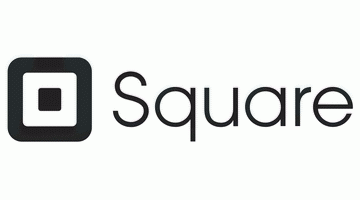Updated on November 22, 2021
Nowadays, it is expected that digital advertising will grow to an annual spend of over $33.5 billion by 2020. The industry is growing at a very fast pace, thereby taking over search ad spend at #1 in 2016. However, with the continuous increase in the ad volume and spend, what would happen to returns?
The average click-through rate of display ads across all the formats as well as placements is a small fraction of about 0.06%. And of this small amount, more than half of mobile ad click are reported to be accidental and that is if you have the ability to reach the user in the first place.
However, the ad blocking tools are also growing at a rapid rate with up to 41% usage on the global average. The number is also higher among the younger generations because almost two out of three millennials report using ad block software.
Some people have predicted that advertising Armageddon stemming from the use of cheap and fake impressions, especially when considering that Methbot, a Russian ad arbitrage fraud bot was amassing $5 million dollars in daily earnings. Others are of the opinion that the future is in engaging, rich content which is aimed at millenials looking for a good brand experiences. However, there is none which is entirely correct.
When there is a rapid increase in the real-time bidding (RTB) in 2011, programmatic ads began their half-decade, and thus became dominant. In the year 2016 alone, more than 96% of advertiser reported using programmatic advertising, with more than half of the digital ad market traded through programmatic exchanges.
Nowadays, the advertisers are used to the ability to make an automatic data-based decision with programmatic and also buy at-scale from a virtually infinite ad inventory.
This is long after Advertising.com which is formally known as TeknoSurf was announced, this is the first cost-per-click (CPC) model for digital advertising, in the year 1998, virtually inventing performance-based marketing. Before this time, most of the internet advertisers have already adopted the age-old CPM (cost per thousand impressions) model which is used by print.
This has resulted to a dichotomy which has persisted for several years in the digital marketing strategy: the brand advertisers were also able to generate a great awareness by paying for low CPMs, while the performance or direct marketers engineers sales put everything in place so as to fuel with the CPC traffic.
These roles have been divided into separate silos over the years by many of the corporations. This seems intuitive. The creative and PR handles the brand messaging while the sales focus mainly on the optimization of funnels and bidding. But this is not 1998. Since then, the attention of human spans have reduced by more than half, despite a five-fold increase in the average volume of information taken on daily basis.
Most of the younger consumer nowadays grew up with the luxury of having digital content throughout their entire lives. Most of the internet users are also effective and unforgiving skimmers and therefore demand high quality content every time.
The truth of the matter is that the users do not hate advertisements, what they dislike is fragmented user experience. As digital citizens, we have been trapped in the midst of a frenzied paintball war because of data: brand evangelists likewise spray around blindly with CPM shotguns while the performance geeks clamor over the bids for CPC snipers.
Because of this, the average website viewer is caught in a gaudy barrage of an endless ad inventory, without adding any sense of unity or design.
And the main root of the issue is volume, the use of retargeting as well as user-tracking technology promised better and more relevant ads for users which are around the world. However, it likewise set off a fluffy of ad inventory creation which can be tested by millions of target users, the performance marketers can also afford to run experiments which are riskier at the cost of the user experience.
The traditional form of digital advertising funnel would result to clicks and then leads and sales, but not storytelling. According to Brian Morrissey, the editor-of-chief at DigiDay, “It is telling a story of the sorry state of an online advertising where ‘beautiful’ and ‘ad-free’ are paired together……and the display advertising for a long period of time has been an intruder to many pages.”
When entering native advertising 2.0, the native ads simply implies that an app or site had its own ad platform or units. Now, native ads will be entirely friction-free: part of the user experience would then be relevant contextually.
This can be anything from the Alexa which recommend the flower of your girlfriend’s birthday to Spotify playing a local Adidas store ad during your run. Amazon and Spotify would then earn commission on the later sales and your user experience would likewise face a little disruption.
This is the type of philosophy which is used in the data-oriented focus of performance marketing with the creative experimental design key to brand messaging, thereby breaking down the misguided dichotomy.
For the last several years, the ads have been pioneered by many names in the tech:
Social media as well as Search engine sites have added native advertising which correlate with their product’s main UI so as to avoid disrupting user experience (i.e. Google Search Suggestions, Facebook Sponsored Posts).
Companies like Carbon, The Deck, and Maingate, which are premium ad exchanges, likewise enforce a strict creative standard in order to offer a cleaner look to the publisher.
Others have taken a bold step in order to develop a proprietary eye-tracking algorithm such as Apple “gazes detection,” and also create an interactive ad, like Pinterest’s Cinematic Pins. The team at Explica has recently launched a native ad platform which combine what has been listed above and many more: eye-tracking algorithms, and visual patent-pending user interactions, UI-friendly design.
The most impressive aspect is that the entire innovations in the presentation of ad content have resulted to a high increase in the ROI. For instance, a native ad on Facebook doubles the average CTR elsewhere on the web, at 0.014%. Additionally, interactive ads on Pinterest have also increase the purchase intent by more than 30%. Eye-tracking has assisted in optimizing the colors as well as positions which is best for attracting attention.
However, the likelihood that users would engage with such native ads is 52%. The ultimate key to better ads is building ads around user experience rather than into them.


